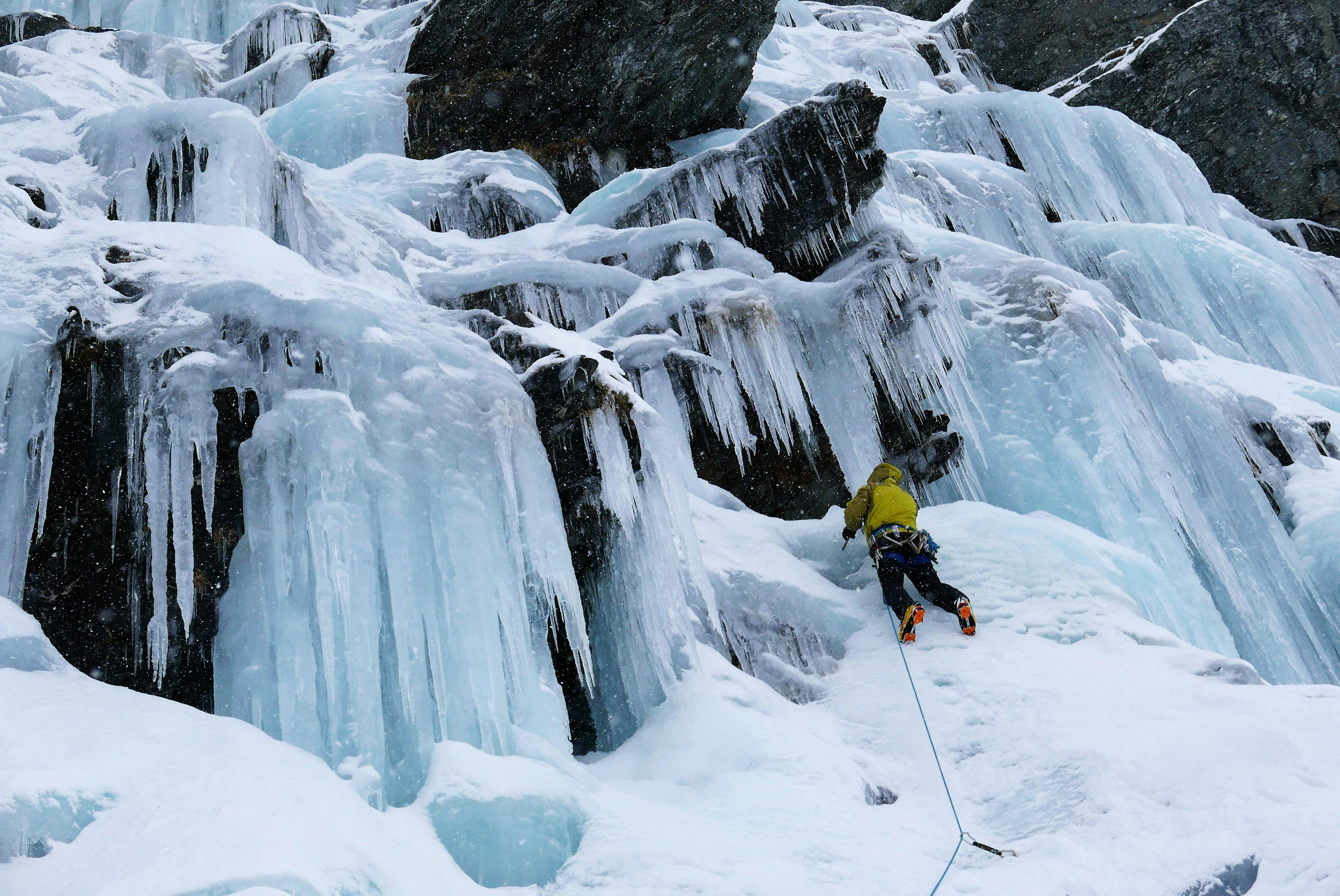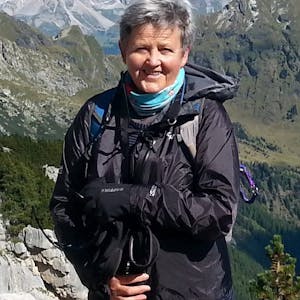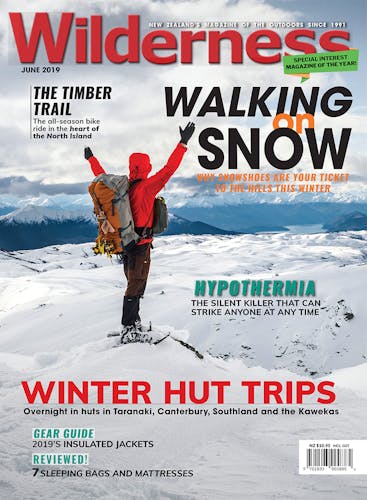What happens when a long-time tramper but novice climber heads into classic ice climbing terrain with a professional ice climbing guide? Kathy Ombler found out.
“I like the way you’re looking at the ice before putting your axe in. People waste a lot of energy just bashing around wildly.”
Did guide Adrian Camm have any idea how much those quietly called words meant, as he belayed me on a sheer ice wall in frozen Wye Creek last winter?
Because to me, it felt absolutely like I was bashing around wildly. Heart racing. Flailing with arms and axes and kicking hard with crampons. Relying on just six tiny points to hold me on this vertical cliff. Defying gravity.
OK, it wasn’t actually vertical, and I was securely roped, belayed by a guide from one of the world’s top climbing schools. Essentially that’s why I was in this frozen place – to learn new skills and challenge myself. By signing up to a five-day course with Adventure Consultants, known for guiding people to the summits of the world’s highest peaks, I would surely be in safe hands.
To some experienced climber friends, this week in Wye Creek was gentle, beginner business. Comfortable, too, based not in an icy bivvy or tiny tent in the snow but an ‘expedition-style’ camp with big gas cookers and stretcher beds. Other friends decided I was, quite simply, mad. So be it.
I had ‘ice-climbed’ before. Once. Briefly. Supported by an experienced companion on a climb of Te Heuheu on Mt Ruapehu. It was enough to pique my interest and, inspired by others who hire guides to keep challenged as they get older, I wanted to explore further.
Daunting though it was.
When Adrian asked on day one what my goals were for the course, I’d nervously blurted: “I’m looking for a challenge and I don’t want to die.”
With a wry smile, he assured me that could be achieved.
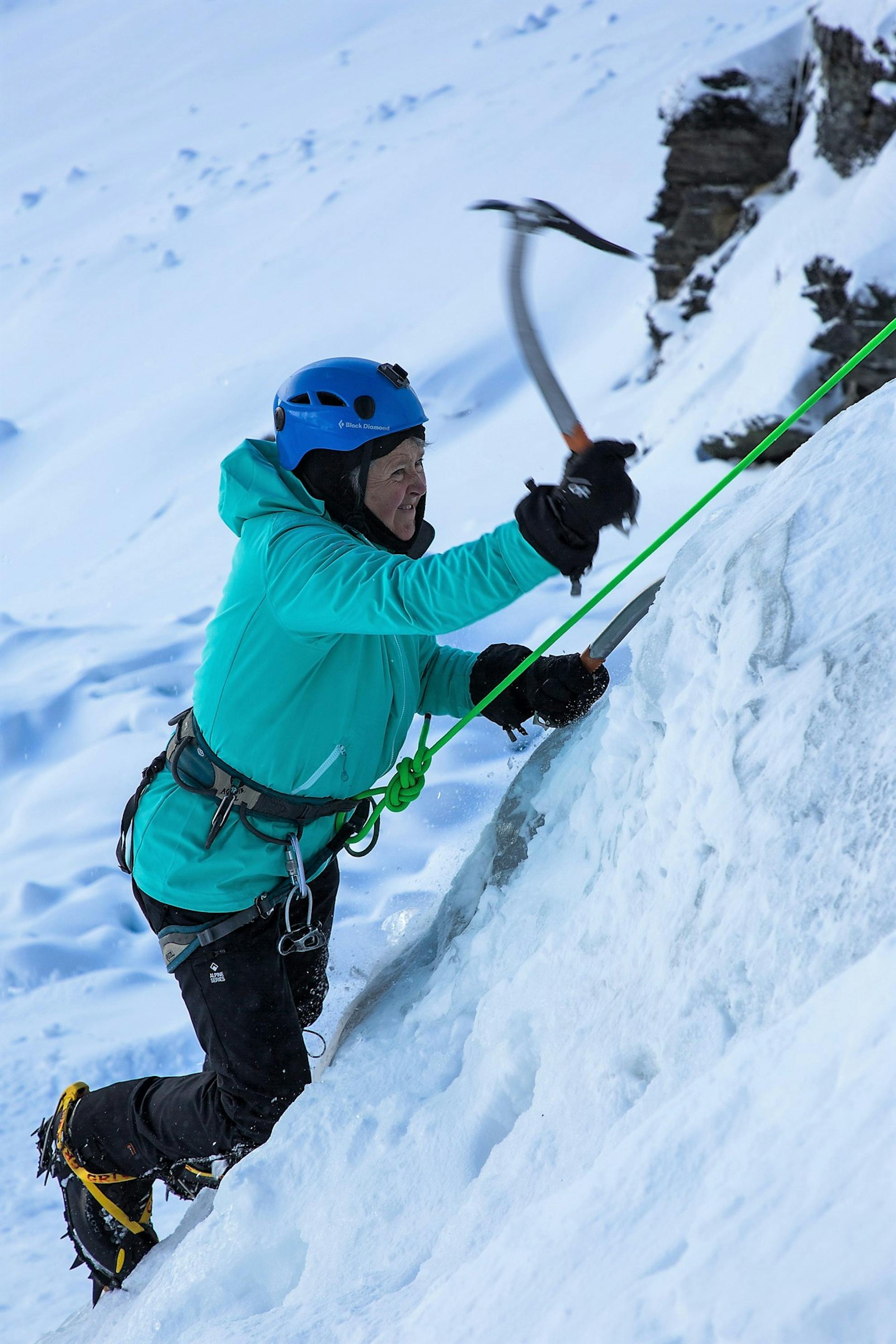
Conversely, the goals of fellow climber Jay, about to start his third ice climbing course, were simply to ‘climb hard’ and advance his techniques. I worried that newbie me would hold him back but Adrian assured there were plenty of opportunities on the Wye Creek cliffs to learn at our respective levels, and so it proved.
Wye Creek is regarded as New Zealand’s ice climbing ‘hot’ spot, and Adventure Consultants has a camp in the valley head. It’s flown in just for the winter climbing season. Course participants also fly in, then walk out via Wye Creek.
But there was no flying for us that first day. Black clouds swirling around Double Cone instead saw us huddled variously in the Heliworks’ hangar, a local café, and finally a holiday cabin for the night. Adrian used the downtime productively; teaching about mountain weather and avalanche patterns, showing us climbing devices and knots to practise, discussing climbing books and podcasts, throwing in a little philosophy. “Going into the mountains is a thinking person’s game,” he said. There was a lot to think about.
Tuesday dawned clear. We buzzed over The Remarkables’ remarkably steep ridgeline, to touch down by two big but forlorn looking tents in the snow-laden basin and, after a quick cuppa, set off to the ice cliffs. The apparently usual 20-minute walk took an exhausting hour as we plugged uphill through deep, fresh snow.
At the base of a mere 25m climb named Slippery Customer, graded WI (Water Ice) 2, we shovelled a bench in the snow, another for our packs, then donned harnesses and crampons. Adrian led, fixing ice screw anchors on his way. Jay belayed him, and I pretended I was calm. Next it was Jay’s turn and I belayed him, which gave me something to think about and helped keep me warm – because of course we were on the shady side of the valley, that’s why the ice was here.
Then it was my turn. Amazingly, those six tiny sharp points – two axes and four front points – held me on the ice. Halfway up was a rest point. The next bit looked incredibly steep, my left arm had gone all wobbly, my heart was thumping. Nothing for it but to just go and while I’m sure it didn’t look pretty, I actually made it all the way to the fixed anchor at the top. By the time I’d been belayed back down, the guys were already busy scoping out a second, more challenging route for Jay. Leaving me to my own secret little fist pumps and grins and phews.
And so it went on. Taking turns to climb. Adrian tutored me: feet wider apart, arms closer together, as I tried different ‘easy’ climbs. Jay navigated scarier looking slopes, fixed his own anchors, smiling all the while.
The day drew in and we returned to camp, the ‘forlorn’ tents now looking more inviting, if not warm. However, the miso soup was, also the hearty stir fry chicken that Adrian whipped up. Good food is critical on these trips, in fact actually cooking a meal for their examiner is something guides do as part of becoming IFMGA qualified, he said.
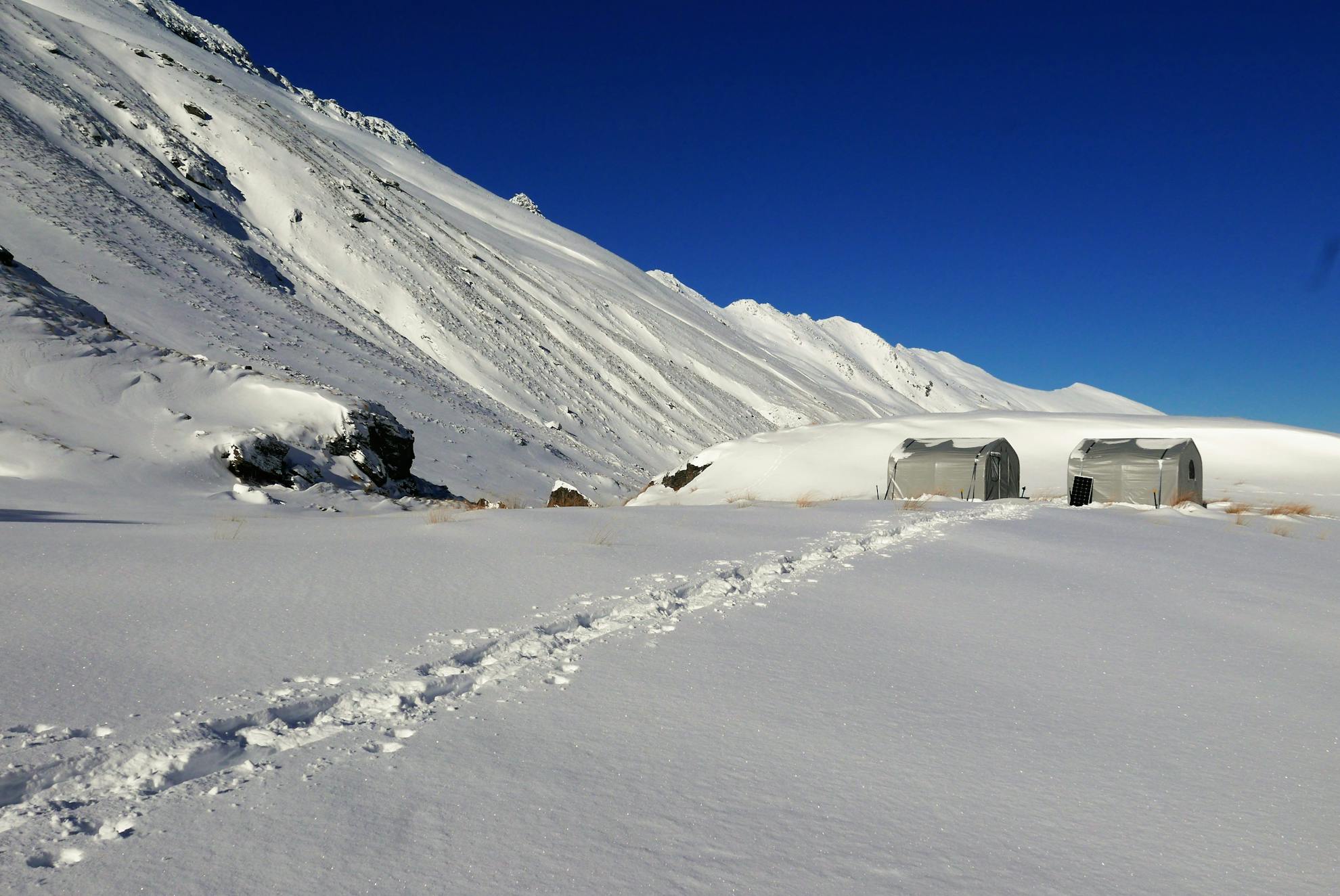
On Wednesday, we woke to fresh snow and a freezing south-westerly hammering the camp. “This is good,” smiled Adrian, “it will keep the ice frozen.”
After freshly brewed coffee, muesli, bacon and French toast, I smiled back.
We plugged uphill to a different cliff. Here a climb called ‘The Prow’, also 25m but rocketing up the levels of difficulty to ‘WI3’, was my new challenge. Adrian coached as I climbed. “Go up with your left arm first, put your axe in, bring your feet up, then put the other axe in above the first axe, on the same line. Move your feet up again. Just tap your front points in, people think you need to kick really hard but you don’t, there you go, wow, you’re looking like a climber.”
Suddenly it clicked. I felt almost co-ordinated. On the straightforward stuff anyway. But some gnarly bits were impeding my progress so I belayed back down to regroup. Adrian discussed tactics, go left there, then go right a bit, and by climb three I made it, all the way. This time the guys shared my sense of achievement.
By 4pm it really was freezing and the wind had picked up so we headed ‘home’, to discover snow in our sleeping tent. Even with sturdy canvas structures, camping in these conditions has its challenges. Lessons learned: zip the door flap properly closed, brush the snow off your boots before going inside, don’t hang your coat and overtrou on the tent wall overnight because they will freeze solid, expect the water in your drink bottle to freeze solid, expect condensation from your breath to freeze solid and settle on your sleeping bag. Happily, with Jay’s sunny outlook on absolutely everything, we were able to laugh our way through all this freezing stuff.
Adrian, of course, was better organised and his tent, also the communal dining/kitchen tent, was immaculate. We quickly settled into an evening routine; helping to prepare then eat dinner, Jay picking Adrian’s brains with technical climbing questions and sharpening his axe and front points, me treating the guys with a sip of port which possibly helped Adrian remember there was a hot water bottle stowed in the tent which he let me use.
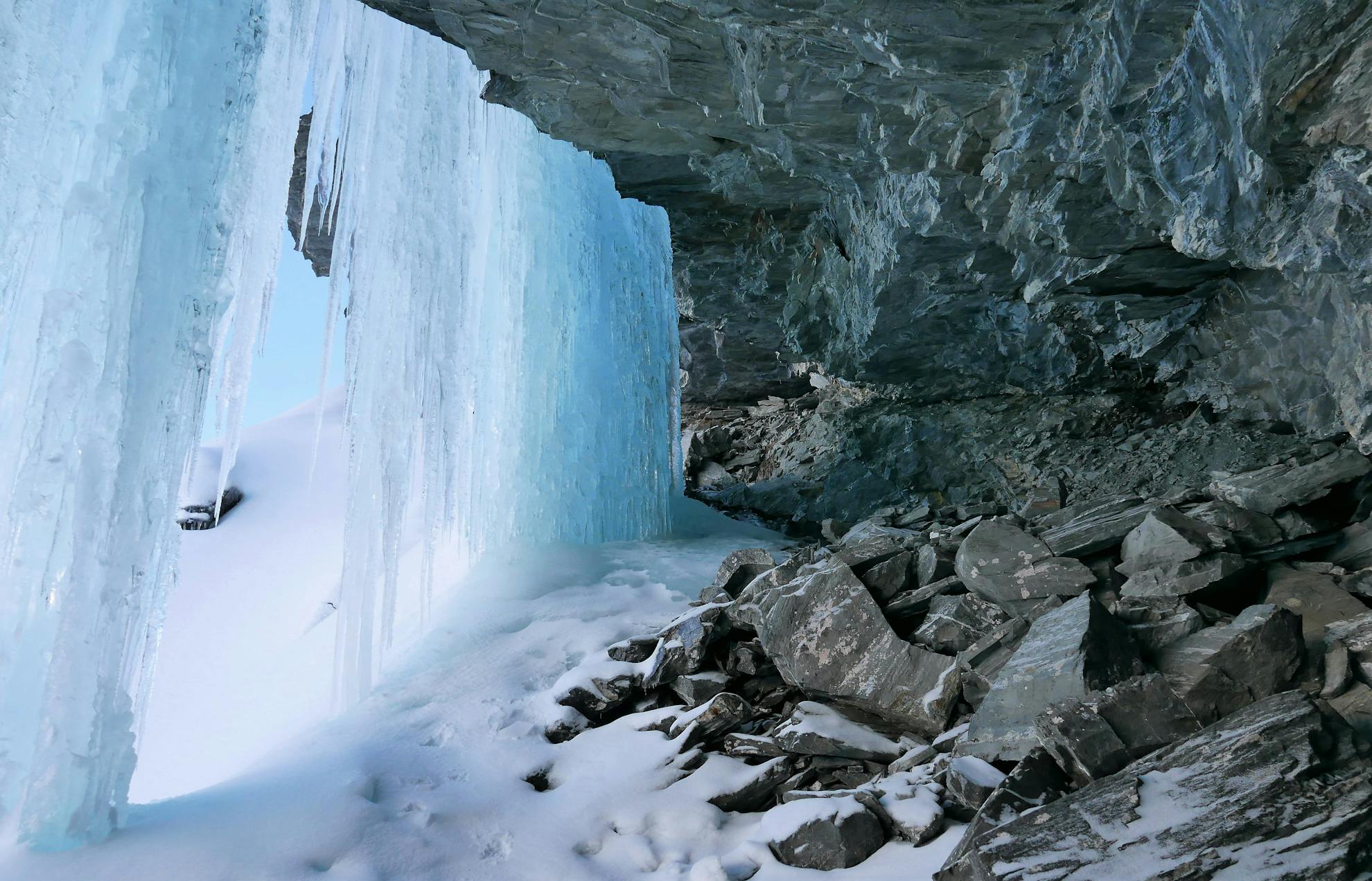
Thursday dawned fine, minus nine and with a slight ‘katabatic’ drift in the air. This was ‘The Day of the Iron Curtain’, something our cheerful guide had been building up to all week. This time we wore snowshoes to the ice cliffs, an easier proposition in the deep drifts.
Again, Adrian organised us on neighbouring climbs that challenged our variable levels. While Jay was in his element, fixing screws to the ice with only occasional suggestions from Adrian, I focused on yesterday’s instructions and tried not to take too long unclipping carabiners with my fat clumsy gloves. Adrian, whose own climbs include the south faces of Mt Douglas and Mt Hicks, was ever patient with my fumbling.
Then he revealed his plan. We would do an ‘expedition-style’ climb, him and Jay taking turns to lead, and we would all end up in this special place he was so keen to show us. Be sure to bring your camera, he said.
This is when I met spindrift. Icy splinters that swept from the bluffs above and blasted my face as I held on mid-cliff, chilled to the bone, waiting for Jay to do his pitch, with Adrian way ahead, both out of sight and earshot, thinking this was just the tiniest taste of what people do when they climb really big mountains and trying not to think about how the next bit was for me the steepest pitch yet. Turns out they were taking a while because the rope had snagged. They fed it out loosely and cool, calm climber me managed to shake it free, then with a confidence that surprised bounced up the final pitch. Jay and Adrian simply laughed as my tense, snow/ice-encrusted face emerged over the crest of the cliff, and thence to behind the ‘Iron Curtain’.
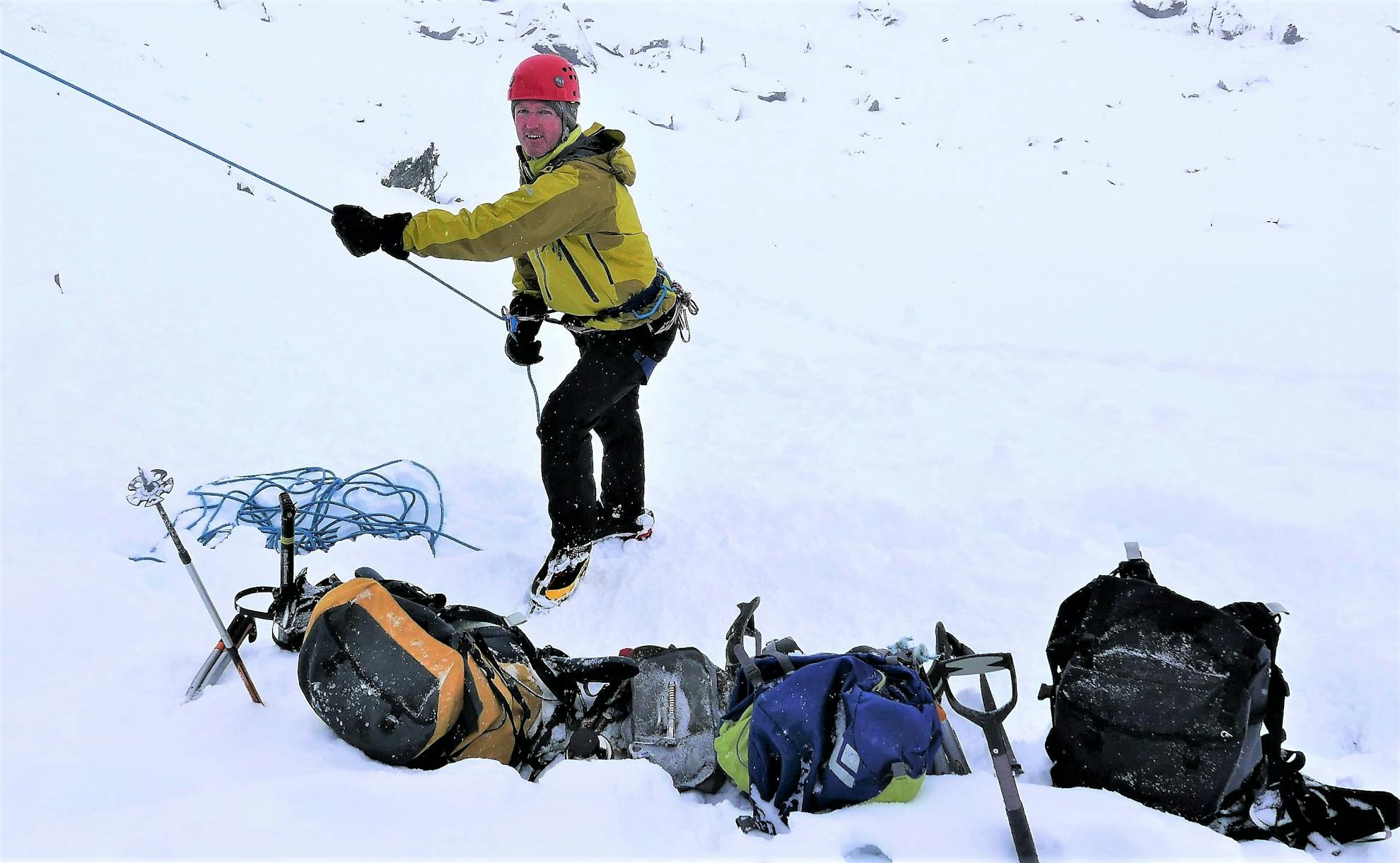
It’s a dramatic name for a dramatic place, the ‘curtain’ made not of iron but ice; massive pinnacles of frozen waterfall, with blue hues and brilliant whites, dripping and sparkling. Hidden behind was a ledge with bivvy sites and a rock wall with fixed bolts, set up by far more hardy climbers than I.
It was indeed a grand finale to our week. “I didn’t want to build it up and have you be disappointed,” Adrian said as we walked down a gentle snow ramp and Jay abseiled directly down, collecting rope and screws on the way.
On Friday we left the valley, descending first on snowshoes, then skittering across a steep, icy sidle and finally departing that freezing, white, challenging, beautiful environment and entering the beech forest.
I’d learned so much, mostly that there is so much to learn. Famous Kiwi climber Lydia Brady, also now an Adventure Consultants’ guide, wrote this about ice climbing: ‘There’s a wonderful interplay between strength and delicacy. Strength because you may be entrusting your entire weight to your ice tools, or the points of your crampons, and yet delicacy because you are constantly looking at the features and details of the route, anticipating your next step, the placement of your protection. When you do something well, or with style, the movement becomes more natural, less forced, and there is a rewarding dialogue between the analytical and creative parts of your brain.’
Dare I suggest that now I understand this, just an inkling.





